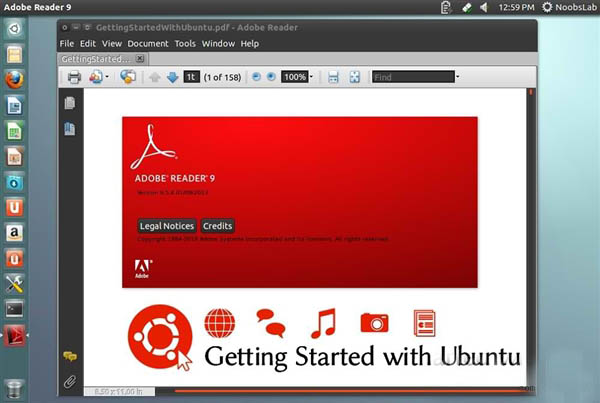先上代码
新建一个Thread,代码如下:
?
|
1
2
3
4
5
6
7
8
9
10
11
12
13
14
|
package com.thread.test;
public class MyThread extends Thread {
private String name;
public MyThread(String name) {
this.name = name;
}
@Override
public void run() {
for (int i = 0; i < 100; i++) {
System.out.println(name+"["+i+"]");
}
super.run();
}
}
|
之后新建测试类,代码如下:
?
|
1
2
3
4
5
6
7
8
9
10
11
12
13
14
15
16
17
18
19
20
|
package com.thread.test;
/*
* 0-50执行的是主线程,50-100执行的是A线程,并且将A线程完全执行完后才继续执行主线程
*/
public class ThreadDemo{
public static void main(String[] args) {
MyThread t = new MyThread("A");
t.start();
for (int i = 0; i < 100; i++) {
if (i>50) {
try {
t.join();
} catch (InterruptedException e) {
e.printStackTrace();
}
}
System.out.println("主线程"+"["+i+"]");
}
}
}
|
下面是Java Platform SE8 API中对Thread中Join方法的解释:
?
|
1
2
3
4
5
6
7
8
|
public final void join(long millis)
throws InterruptedExceptionWaits at most millis milliseconds for this thread to die. A timeout of 0 means to wait forever.
This implementation uses a loop of this.wait calls conditioned on this.isAlive. As a thread terminates the this.notifyAll method is invoked. It is recommended that applications not use wait, notify, or notifyAll on Thread instances.
Parameters:
millis - the time to wait in milliseconds
Throws:
IllegalArgumentException - if the value of millis is negative
InterruptedException - if any thread has interrupted the current thread. The interrupted status of the current thread is cleared when this exception is thrown.
|
先上代码
新建一个Thread,代码如下:
?
|
1
2
3
4
5
6
7
8
9
10
11
12
13
14
|
package com.thread.test;
public class MyThread extends Thread {
private String name;
public MyThread(String name) {
this.name = name;
}
@Override
public void run() {
for (int i = 0; i < 100; i++) {
System.out.println(name+"["+i+"]");
}
super.run();
}
}
|
之后新建测试类,代码如下:
?
|
1
2
3
4
5
6
7
8
9
10
11
12
13
14
15
16
17
18
19
20
|
package com.thread.test;
/*
* 0-50执行的是主线程,50-100执行的是A线程,并且将A线程完全执行完后才继续执行主线程
*/
public class ThreadDemo{
public static void main(String[] args) {
MyThread t = new MyThread("A");
t.start();
for (int i = 0; i < 100; i++) {
if (i>50) {
try {
t.join();
} catch (InterruptedException e) {
e.printStackTrace();
}
}
System.out.println("主线程"+"["+i+"]");
}
}
}
|
下面是Java Platform SE8 API中对Thread中Join方法的解释:
?
|
1
2
3
4
5
6
7
8
|
public final void join(long millis)
throws InterruptedExceptionWaits at most millis milliseconds for this thread to die. A timeout of 0 means to wait forever.
This implementation uses a loop of this.wait calls conditioned on this.isAlive. As a thread terminates the this.notifyAll method is invoked. It is recommended that applications not use wait, notify, or notifyAll on Thread instances.
Parameters:
millis - the time to wait in milliseconds
Throws:
IllegalArgumentException - if the value of millis is negative
InterruptedException - if any thread has interrupted the current thread. The interrupted status of the current thread is cleared when this exception is thrown.
|
我自己的理解就是会强行进入使用join方法的线程,其他线程等待该线程完全执行完后才会进来。
原文链接:http://www.cnblogs.com/Miracle-Maker/archive/2017/01/08/6261738.html
相关文章
猜你喜欢
- 个人网站服务器域名解析设置指南:从购买到绑定全流程 2025-06-10
- 个人网站搭建:如何挑选具有弹性扩展能力的服务器? 2025-06-10
- 个人服务器网站搭建:如何选择适合自己的建站程序或框架? 2025-06-10
- 64M VPS建站:能否支持高流量网站运行? 2025-06-10
- 64M VPS建站:怎样选择合适的域名和SSL证书? 2025-06-10
TA的动态
- 2025-07-10 怎样使用阿里云的安全工具进行服务器漏洞扫描和修复?
- 2025-07-10 怎样使用命令行工具优化Linux云服务器的Ping性能?
- 2025-07-10 怎样使用Xshell连接华为云服务器,实现高效远程管理?
- 2025-07-10 怎样利用云服务器D盘搭建稳定、高效的网站托管环境?
- 2025-07-10 怎样使用阿里云的安全组功能来增强服务器防火墙的安全性?
快网idc优惠网
QQ交流群
您的支持,是我们最大的动力!
热门文章
-
2025-06-05 105
-
2025-06-04 61
-
Java中HashTable和HashMap的区别_动力节点Java学院整理
2025-05-29 59 -
2025-06-04 73
-
Adobe Reader因不再吸引Linux用户决定退出Linux系统
2025-05-27 13
热门评论









